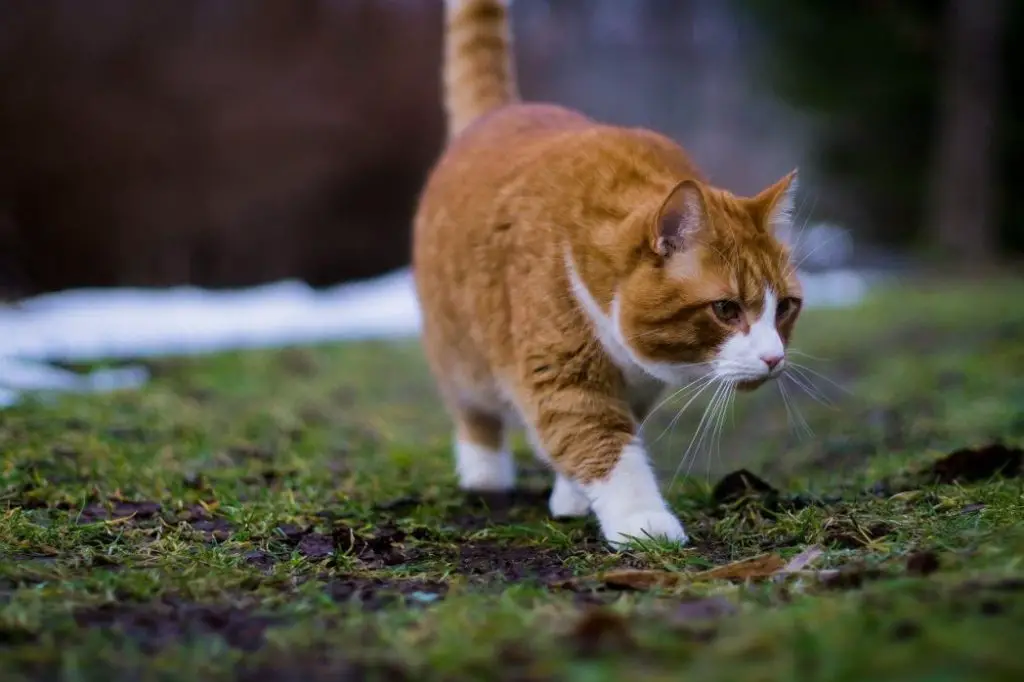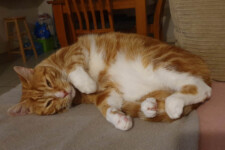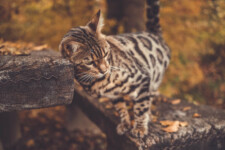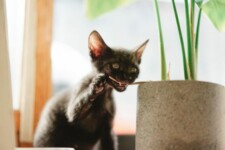All About Siberian Cats (What You Need To Know)
The Siberian cat, sometimes known as the Moscow Longhairs or Siberian Forest cat, is a fascinating breed with Russian’s origins and also Russia’s national cat.
They appeared in Russian fork tales, children’s books and fairy tales, as well as movies such as “Nine Lives”.
The Siberian cat is capable of mating for life and is serious about parenting, with the fathers take a huge role in taking care of and nurturing the kittens.
These beautiful cats have a thick triple layered coat which repels water, and they are unique in the fact that they can be fascinated by water, often not minding a swim or getting wet.

History Of The Siberian Cat Breed
The exact beginnings of the Siberian cat are not known.
They are mentioned as early as 1000 AD, however records about Siberian’s were not kept until the 1980’s.
They first appeared in an English cat show in the 1870’s, and the US in 1889.
In the 1940’s, the Siberian was imported to many large soviet cities because of their ability to hunt mice and other rodents.
The decision was made to keep the rodent population down, and n 1987 they were registered as a breed by the Kotofei Cat Club, located in St. Petersburg.
Exports of the Siberian did not occur until the cold war ended, and were first imported to the US around 1990.
The International cat association (TICA) and the American Cat Fanciers Association (ACFA) recognized the breed in 1996 and 1999 respectively, while the Cat Fanciers Association (CFA) recognized the breed in 2006.
Physical Appearance
The Siberian cat is powerfully built with a large tail, and large firm rounded paws.
Their eyes are large, while the ears range from medium to large. They are also stockier compared to other cats.
The hind legs are longer than the front legs, and so they appear to have an arched back.
- An average Siberian male cat weighs between 15-20 pounds, while a large one can weigh up to 25 pounds.
- Females are relatively smaller and weigh between 10-15 pounds.
Color and Patterns
Siberian cats comes in many colors. and these colors and patterns can be dramatic and profound.
- Some of the colors include brown (black) tabbies, silver tabbies, blue and cream tabbies, golden tabbies, solids (selfs), red and tortie tabbies, blue and cream tabbies.
- The patterns can be classic (blotched), mackerel (striped), shaded tabby, or spotted.
With a shaded tabby, the pattern is faded out, while a spotted Siberian has the stripes on the side broken up into spots.
The patterns can also be pointed like those of the Siamese or Birman markings where the cat has a pale body, and color only appears on the legs, faces, and tail.
Grooming Needs
One of the perks of owning a Siberian cat is low maintenance.
The thick and water-resistant coat, the bushy tail, and the full collar ruff on its hind legs do not tangle, so a weekly brush will surely keep them in excellent shape.
However, the coat mats and sheds during the fall and spring, therefore you will have to spend some time every day to remove the shedding hair.
They generally enjoy getting into the water, especially if you introduce them to baths at an early age – which is highly unusual for cats.
It should not come as a shock if your cat decides to join you in the shower or bath.
Although frequent baths are not necessary, they help in getting rid of allergens.
Personality and behavioral traits
The Siberian cats love attention, but they are not overbearing and needy.
They are calm, relaxed, and can make for a good support animal. They do not get bothered by noise or an ongoing activity.
The Adrenaline Seeker
The Siberian cats have an adventurous soul.
They are active, playful, and quite athletic, and their strong hind legs give them massive jumping power.
They will spend leaping and climbing anything high around your home.
These cats are always looking for an adventure, and love engage in activities like playing in water, and chasing toys around.
Being such active cats they can easily be trained to go out walking on a leash with you, and is a great way to get them some extra exercise.
They take around 4-5 years to fully mature, playing like kittens for many years, and they remain quite playful during their lifetime.
They Are Social Cats
Siberian cats are easy-going, fearless cats who enjoy the company of humans, especially children, dogs, and other animals, but can be suspicious around strangers.
Your cat will often follow you around and greet you enthusiastically when you come home.
Not big talkers, they will express themselves quietly through trills, mews, purring, and chirps.
They will often sense when someone needs emotional support and spend time with them.
The intelligence of these cats can be seen in the way they engage in interactive games such as fetch and peek-a-boo.
They also like playing with laser pointers and wand toys, so they are loads of fun to play with – especially great if you have children.
They are inquisitive and are often found in the middle of all home activities, such as watching you make dinner or even take part in folding clothes.
Keep the Siberian cat challenged and engaged by teaching them tricks and offering a wide variety of cat toys.
Check out our list of great cat toys that keep kitty busy!
Health Concerns
These cats generally enjoy a healthy life. However, hypertrophic cardiomyopathy is a problem you should monitor.
The disease causes an enlargement of the heart muscle and affects both non-pedigreed and pedigreed cats, including the Siberian.
Caring For Your Siberian Cat
Owing to their communal nature, as you consider adopting or buying a Siberian cat, getting two instead of one is worth considering, as they thrive when they have a companion.
Ensure that you protect your cat from danger by keeping glass ornaments and other dangerous items out of reach. Buy a cat tree, if possible, to help keep your cat occupied.
Reproduction
These cats reach the reproductive age earlier than most cats. This can be attributed to their closeness to their wild state.
Feral cats die younger than domestic cats, therefore, they reproduce earlier.
An average single litter often has 5-6 kittens, though that number can reduce to one or increase to nine.
Final Word
The Siberian cat has a vibrant personality and full of life.
They have lower chances of causing allergies compared to other breeds.
For a family, especially with children, they are a great choice and will give you years of love, affection, and outright entertainment.
See More Of Our Cat Breeds Series
Find Out About Calico Cats (The ‘Lucky Charm’)
Read About Tortoiseshell Cats (Tortie’s) – The Lucky Cat!
Cute Ginger Tabby Cats (What Makes Them Special?)
Have You Heard Of Lykoi Cats? (Little Warewolves!)



